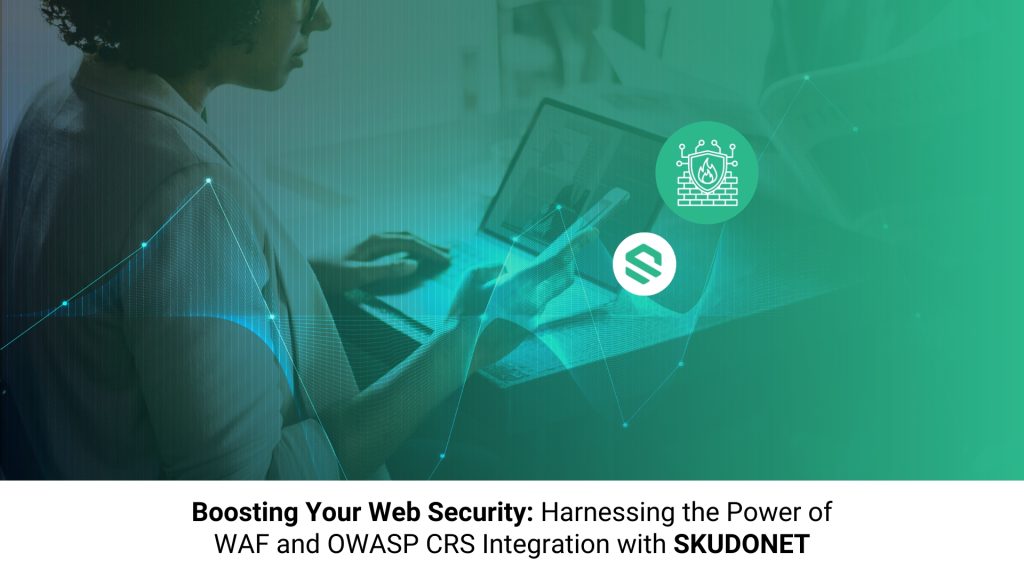In today’s digitally connected world, safeguarding your web applications from malicious attacks is paramount. One powerful tool in the arsenal of cybersecurity is the Web Application Firewall (WAF). In this blog post, we’ll delve into the concept of WAF and explore how it is seamlessly integrated with the renowned Open Web Application Security Project Core Rule Set (OWASP CRS), a widely recognized project in the cybersecurity sphere.
What is a Web Application Firewall (WAF)?
A Web Application Firewall, or WAF, is a security solution designed to protect web applications from various online threats and vulnerabilities. It acts as a barrier between your web application and the internet, monitoring incoming traffic and blocking any suspicious or harmful requests. Think of it as a digital bouncer guarding the entrance to your website or web application, allowing only legitimate traffic to pass through.
The Significance of OWASP CRS
The Open Web Application Security Project (OWASP) CRS is a collaborative project that aims to provide a set of rules and protections for web applications against common security threats. These rules are created and maintained by a community of security experts and are based on real-world attack data. The OWASP CRS is an invaluable resource for web developers and security professionals looking to enhance the security of their applications.
The Synergy of WAF and OWASP CRS
Integrating a WAF with OWASP CRS rules brings a significant advantage to web security. Here’s how it works:
- Traffic Analysis: When a request reaches your web application, the WAF intercepts it first. It analyzes the request’s parameters, headers, and content.
- Rule-Based Filtering: The OWASP CRS rules come into play at this stage. These rules are specifically designed to detect and block known attack patterns and malicious payloads. If a request matches any of these patterns, it’s flagged and can be blocked or logged, depending on the configured settings.
- Protection from OWASP Top Ten: OWASP CRS is particularly effective in guarding against the OWASP Top Ten, a list of the most critical web application security risks. These risks include SQL injection, cross-site scripting (XSS), and more.
- Continuous Updates: One of the benefits of using OWASP CRS is its continuous improvement. The community regularly updates and enhances the rules to address emerging threats, ensuring that your web application remains protected against the latest attacks.
Incorporating a WAF with OWASP CRS rules into your web security strategy is a proactive and effective way to defend against a wide range of web-based threats. By leveraging the expertise of the OWASP community and the capabilities of a WAF, you can fortify your web applications and provide a secure online experience for your users.
In an era where cyber threats are constantly evolving, staying one step ahead is crucial. Consider implementing a Web Application Firewall with OWASP CRS rules to strengthen your web security posture and protect your digital assets from the ever-present risks of the internet. Your web applications and users will thank you for it.
Moreover, it’s worth noting that SKUDONET goes the extra mile in enhancing your web security. SKUDONET IPDS packages incorporate OWASP ModSecurity rules, but what sets SKUDONET apart is its flexibility. You have the power to create your custom ruleset, tailoring your defense to protect your system against any kind of attack. This level of customization further strengthens your security strategy and ensures that you have a robust shield against the ever-evolving threat landscape. With SKUDONET, you’re not just keeping pace with cyber threats; you’re outpacing them, securing your digital assets with precision and confidence.
SKUDONET WEB APPLICATION FIREWALL (WAF)
Those rules are ordered by preferences. If you decide to use them, please consider them and apply them as follows:
REQUEST-90-CONFIGURATION REQUEST-901-INITIALIZATION Apply any other OWASP ruleset based on what you want to protect REQUEST-949-BLOCKING-EVALUATION RESPONSE-959-BLOCKING-EVALUATION RESPONSE-980-CORRELATION *for logging purposes, enable this only for troubleshooting.
By default, this OWASP ruleset uses a scoring system called paranoia levels, and the default is 1. If you want to read more about those levels, please refer to the following faqs OWASP Modsecurity ruleset FAQ.
In case you want to increase the paranoia level, please do the following:
Go to ruleset REQUEST-901-INITIALIZATION Rules Tab, then Edit in raw mode the rule number 901120, and change:
setvar:'tx.paranoia_level=1
by the desired paranoia level.
The WAF rulesets view shows an overview of the available rulesets:
- Name. A descriptive name to identify a ruleset. Click on it to enter the editing form.
- Farms. The Farms to which the rule is applied. You may expand the farm list using an upward arrow placed adjacent to the FARMS column header on its right. By default it is limited to 20 characters.
- STATUS. Ruleset status is represented by the following status color codes:
- Green. Means ENABLED. The ruleset is being checked for the farms that are using it.
- Red. Means DISABLED. The ruleset is not enabled, thus it is not having any effect on the farm.
- Actions. Allowed actions for the status of the WAF rules:
- Edit. Modify the ruleset settings or assign a farm service if needed.
- Restart. Reinitialize a WAF rule.
- Start. Apply the WAF ruleset.
- Delete. Remove a ruleset.
Protect your online presence with SKUDONET
Discover how SKUDONET’s solution can help you safeguard your digital assets effectively. Try Enterprise


